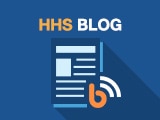Patients need transparency and relief from high drug costs, not defense of the status quo
The current drug pricing system is broken and indefensible. Right now, everybody but the patient benefits as list prices climb higher and higher.
President Trump has proposed to bring transparency to the system, end the status quo of kickbacks from drug companies to middlemen and plans, known in the industry as “rebates”, and deliver those savings straight to patients and their pocketbooks.
This proposal would be a major step forward in bringing transparency to an opaque drug market that is currently built on hidden deals and payments that are not reflected in what the patient pays at the pharmacy counter. The government knows that rebates are paid on drugs representing 93% of Part D’s “non-protected class” spending. Patients need to know how much less they could be spending on high-cost drugs if these savings went to them. Incidentally, we’ve proposed via other rulemaking to give pharmacy benefit managers (PBMs) new tools to get better deals on “protected class” drugs, including tools specific to prices rising faster than inflation.
Ending this system of kickbacks would ease the sticker shock tens of millions of Americans experience at the pharmacy counter – especially early in the year when they’ve just started working through their deductible in January and they may see their out-of-pocket costs at the pharmacy skyrocket for the exact same drugs.
Consider a patient who goes to the pharmacy to fill a prescription for a drug that costs, say, $300. What the patient may not know is that part of the $300 charged by the drug company is a hidden kickback to a middleman. That kickback could be for $60, $80, $100, or more– the patient has no way of knowing and is required to pay based on the $300 price of the drug.
We believe the kickbacks should be eliminated and that the patient deserves a discount right there at the pharmacy counter. Imagine getting that discount every time you fill a prescription. Patients with diseases like rheumatoid arthritis could save hundreds or thousands of dollars every year.
The middlemen will tell you that the money they are skimming off the price of a drug goes back to the patient in the form of lower premiums. Some will say that getting rid of the kickbacks will cause premiums to rise. Don’t buy this defense of the status quo. Part D premiums under any scenario are going to be affordable—even the most liberal estimate projects premiums will rise by just a few dollars. For many seniors, the savings in premiums do not exceed the growth in costs at the pharmacy counter. My grandmother would gladly have paid an extra three to five bucks a month to see her drugs cost several hundred or thousand dollars less. Simply stated, higher rebates encourage higher drug prices. By taking on rebates, we’re addressing the real problem: the unaffordable out-of-pocket costs that many seniors are facing when they go to the pharmacy.
Further, projections of premium increases operate from the unrealistic assumption that Part D plans won’t do what everyone who knows the market expects them to do, which is find a way to hold down premiums, through increased use of generics, tougher negotiation, or reduced overhead.
This proposal to eliminate rebates in Medicare Part D and Medicaid managed care plans means there will be no excuse left for drug companies to keep hiking their list prices every year. Drug companies alone are responsible for their rising list prices. By replacing these kickbacks with discounts offered at the pharmacy counter, drug companies will no longer have an excuse not to cut their list prices and will be able to pass on those price cuts directly to patients through lower prices.
The “rebates” offered in the current system have fueled artificially high drug prices not only for patients but also for the federal government. Ending these kickbacks will bring prices down, and lower list prices will also cut Medicare costs while saving patients money. Fundamentally, this reform is about ensuring that our seniors with high drug costs are receiving real discounts and real protection within the Medicare program, which too many of them are not getting today.
This proposal could usher in the single-biggest change to how drugs are priced at the pharmacy counter, delivering directly to patients and their pocketbooks the discounts drug companies currently give to middlemen today. And it provides a model for Congress to take bipartisan action to bring transparency and provide relief from high drug prices beyond just the Medicare program so that patients with employer-sponsored health plans also benefit. Democrats and Republicans have made it clear that they agree with the administration on the need for more transparency, and we welcome Congress joining us to bring transparency to this utterly broken market.
A Global Response to a Global Threat
My First Year as HHS Assistant Secretary for Health


